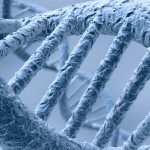Link to Pubmed [PMID] – 19201978
Appl. Environ. Microbiol. 2009 Apr;75(7):2017-26
Aeruginosins are bioactive oligopeptides that are produced in high structural diversity by strains of the bloom-forming cyanobacterial genera Microcystis and Planktothrix. A hallmark of aeruginosins is the unusual Choi moiety central to the tetrapeptides, while other positions are occupied by variable moieties in individual congeners. Here we report on three aeruginosin synthetase gene clusters (aer) of Microcystis aeruginosa (strains PCC 7806, NIES-98, and NIES-843). The analysis and comparison the aer gene clusters provide the first insight into the molecular basis of biosynthetic and structural plasticity in aeruginosin pathways. Major parts of the aer gene clusters are highly similar in all strains, particularly the genes coding for the first three nonribosomal peptide synthetase (NRPS) modules except for the region coding for the second adenylation domain. However, the gene clusters differ largely in genes coding for tailoring enzymes such as halogenases and sulfotransferases, reflecting structural peculiarities in aeruginosin congeners produced by the individual strains. Significant deviations were further observed in the C-terminal NRPS modules, suggesting two distinct release mechanisms. The architecture of the gene clusters is in agreement with the particular aeruginosin variants that are produced by individual strains, the structures of two of which (aeruginosins 686 A and 686 B) were elucidated. The aer gene clusters of Microcystis and Planktothrix are proposed to originate from a common ancestor and to have evolved to their present-day diversity largely through horizontal gene transfer and recombination events.


